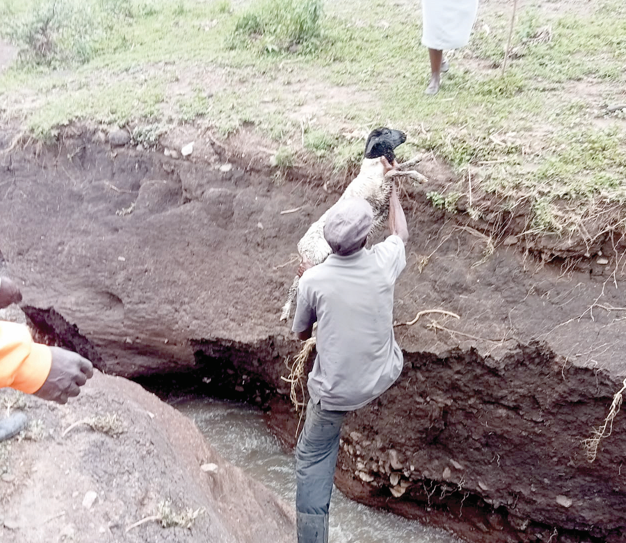Brace yourselves for more rains, says Met

The torrential rains that have caused devastating floods in various parts of the country, killing scores of people and displacing thousands, will continue, the Meteorological Department has warned.
Meteorological Services Director David Gikungu, in an advisory, warned that during the heavy rainfall period, floods, poor visibility, rising of water levels in rivers, lakes and dams will potentially rise.
Consequently, Gikungu warned residents of the Lake Victoria Basin, the Rift Valley, Highlands West and East of the Rift Valley, including Nairobi to brace themselves for heavy downpour between today and Thursday.
Thereafter, Gikungu said, the rains would subside in the said areas, with the intensity picking up in the Coast region than ever before. “Avoid driving through, or walking in moving water or open fields and not to shelter under trees and near grilled windows to minimise exposure to lightning strikes,” he said.
Areas affected are Kisumu, Homa Bay, Siaya, Migori, Busia, Kisii, Nyamira, Nandi, Kericho, Bomet, Kakamega, Vihiga, Bungoma, Narok, Baringo, Nakuru, Trans Nzoia, Uasin Gishu and Elgeyo Marakwet. Others include West Pokot, Turkana, Samburu, Nyandarua, Laikipia, Nyeri, Kirinyaga, Murang’a, Kiambu, Nairobi, Machakos, Kajiado, Mombasa, Tana River, Kilifi, Lamu and Kwale counties.
“Heavy rainfall of more than 30mm in 24 hours pounding several parts of the Lake Victoria Basin, the Rift Valley, Highlands West and East of the Rift Valley including Nairobi area is expected to continue from May 19. The heavy rainfall is predicted to intensify to more than 40mm in 24 hours over the Rift Valley, Highlands West and East of the Rift Valley including Nairobi area, Lake Victoria Basin and off Coast on May 20 to 21. It is likely to reduce in intensity on May 22 inland but intensify along the Coast from May 22 to 24,” read the advisory.
During the period, the weatherman warned strong winds may blow off roofs, uproot trees and cause structural damages besides affecting marine activities. He urged Kenyans in landslide prone areas especially over hilly areas to be vigilant and move to safer grounds.
“Residents are advised to avoid driving through, or walking in moving water or open fields and not to shelter under trees and near grilled windows to minimise exposure to lightning strikes. People in landslide prone areas especially over hilly areas should be vigilant. Strong winds may blow off roofs, uproot trees and cause structural damages. Large waves may affect marine activities,” the advisory addressed to various government agencies read in sections.
The flooding situation in the country has been wreaking havoc causing deaths and destruction.
Catastrophic weather pattern
At least 200 people have been killed during the catastrophic weather pattern, over 3,000 households have been displaced while more than 1,000 schools have experienced infrastructural damages putting the education of learners who resumed studies a week ago at risk.
Meanwhile, residents affected by floods and mudslides in Narok South have received food and non-food item donations from Nairobi Shree Swaminarayan Mandir Temple worth Sh3 million.
The consignment was flagged off by Narok Governor Patrick Ntutu, for the residents of Narok South and the neighbouring Maasai Mau Forest who were hit by mudslides.
Nunu Shangani, Arun Rabadia, and Prakash Pindoria led the temple mission, where they donated 210 mattresses, 210 blankets, two and a half sacks of Crocs slippers, 200 bags of Unga of five kg each, UHC milk 360 pieces, and assorted children’s food and juices. “We are here to bring hope and happiness to the families affected by the heavy rains amid the disaster menace,” said Rabadia.
According to statistics given by Narok South Deputy County Commissioner Felix Kisalu, some 11-people died and over 2,000 were displaced by floods in Narok South Sub County since the heavy rains began.
The County Executive Member in Charge of Administration, Coordination of Decentralised Services, and Disaster Management, Josephine Ng’eno, said a total of 1612 households have been displaced in the upper Ololulunga and Melelo areas bordering the Maasai Mau Forest and are sheltering in nearby schools and churches.











